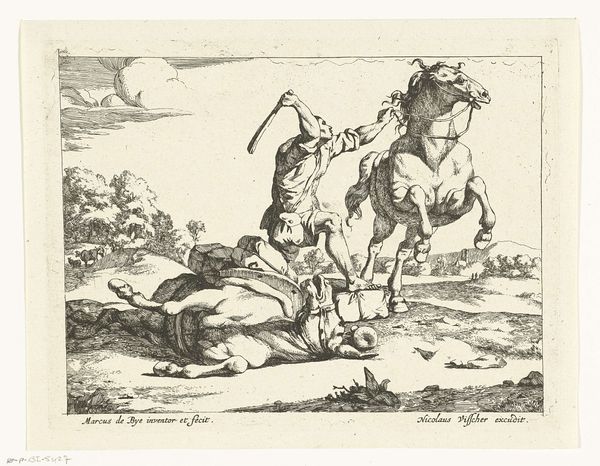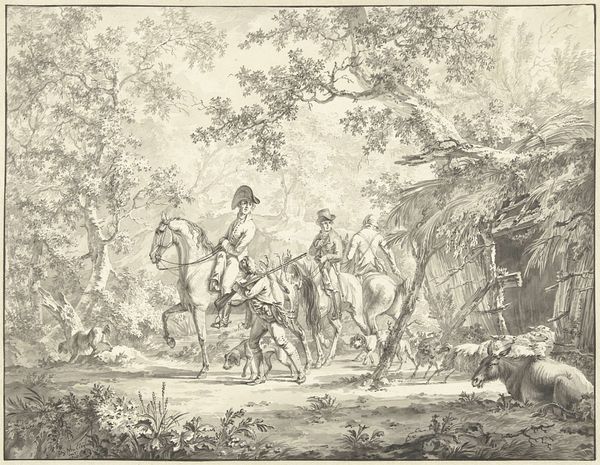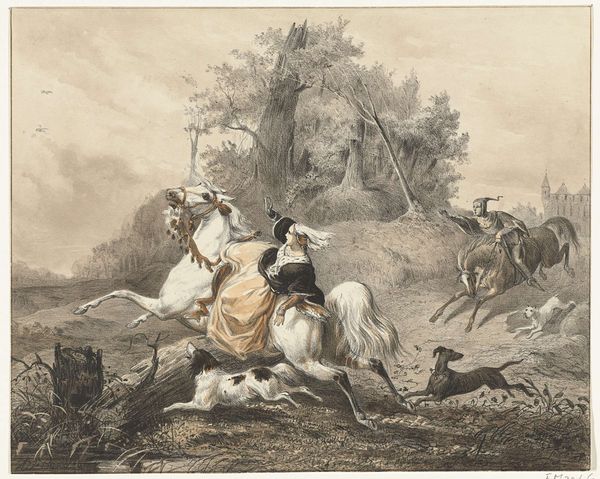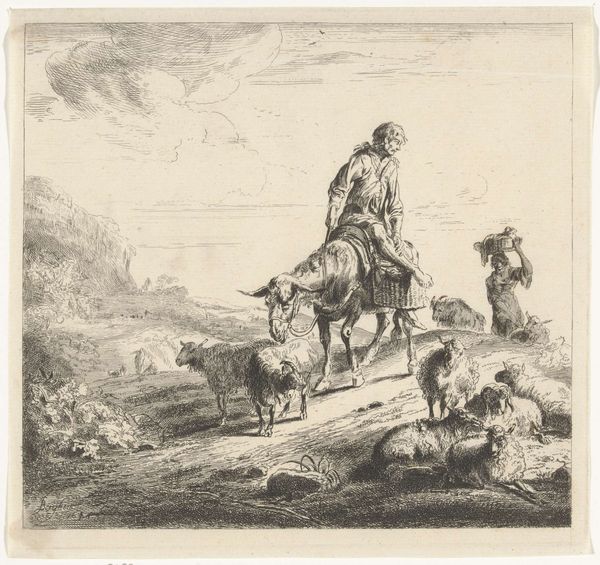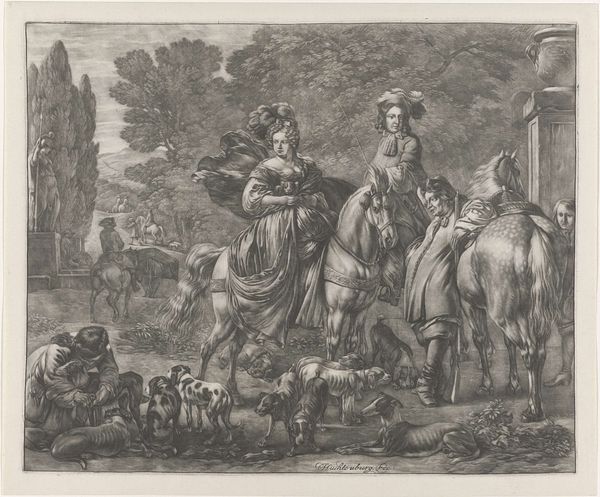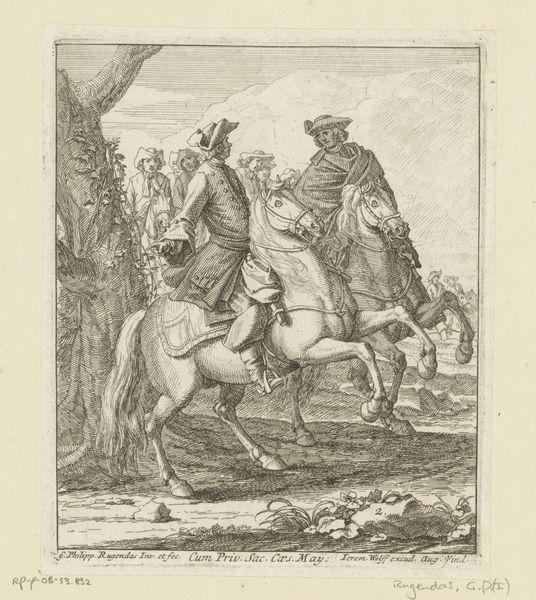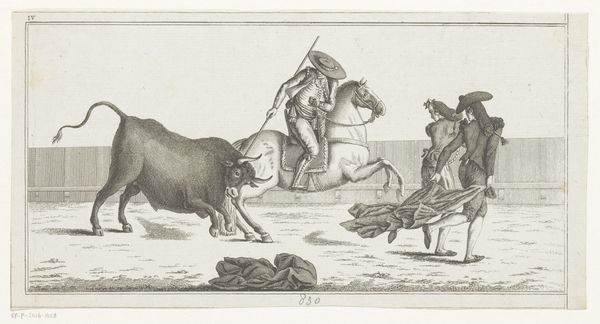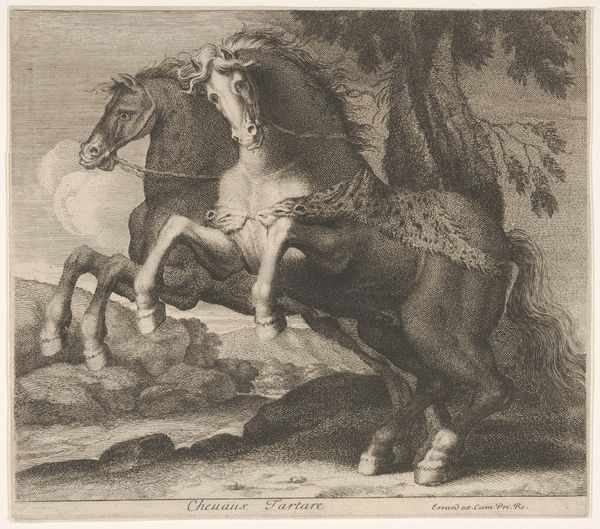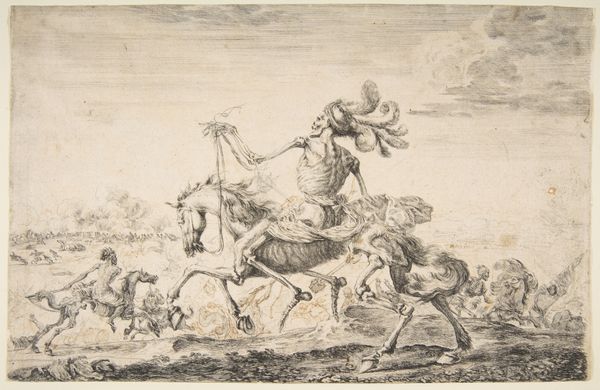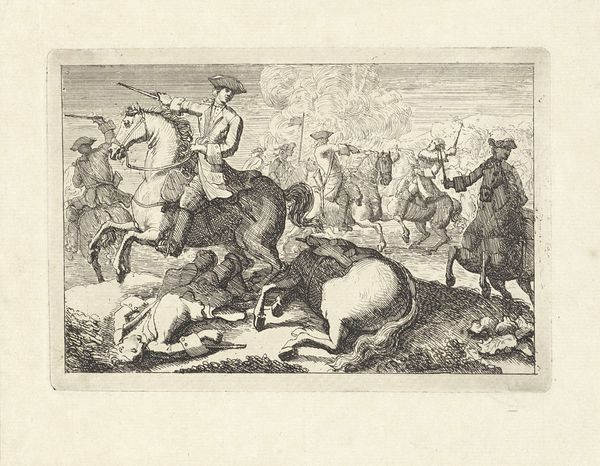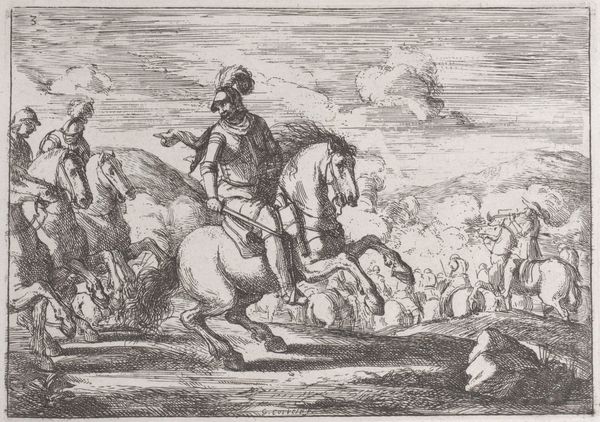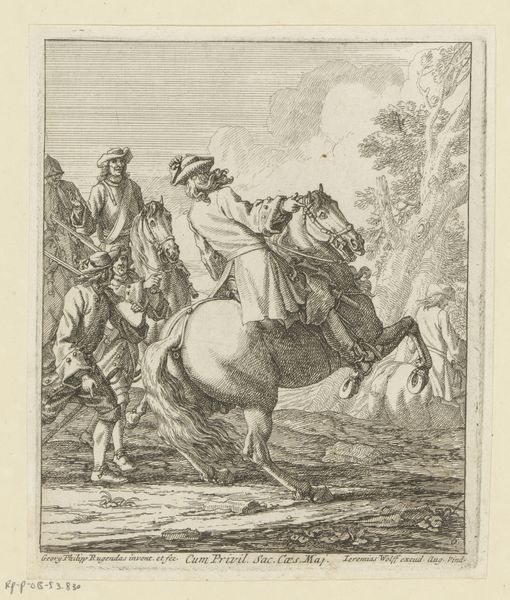
drawing, pencil, graphite
#
drawing
#
light pencil work
#
baroque
#
pencil sketch
#
landscape
#
figuration
#
pencil
#
surrealism
#
graphite
#
genre-painting
#
pencil art
Dimensions: height 181 mm, width 284 mm
Copyright: Rijks Museum: Open Domain
Curator: Let's take a look at this graphite drawing, "Couple on Horseback at a Mountain Lake," made after 1656 by Abraham Jansz. Begeyn. What are your initial thoughts? Editor: It strikes me as remarkably peaceful, almost dreamlike. The soft graphite and open composition contribute to this placid scene of figures calmly traversing the landscape. Curator: Indeed. Considering Begeyn's landscape specialization, the materiality reveals the evolving processes involved in representing social status through the ownership and use of these horses. He was clearly experimenting with rendering light and texture, using graphite as a quicker, less laborious option. Editor: Absolutely. The use of landscape here speaks to a sense of power and exploration that characterized Dutch society at the time, a tangible link between this scene and the growing presence and reach enabled by merchantilism. Curator: It's important to note, however, that this apparent freedom likely existed on the backs of laborers within Begeyn’s workshop, with possible division of labor among assistants impacting both quality and consistency. Editor: Of course. We also have to question whose perspectives are privileged in this visual record of leisure and travel? What about the experiences of othered people not given voice in this historical moment? The very act of choosing who to include in these sketches says a lot about prevailing cultural hierarchies. Curator: You're right. By looking closely at these figures, what can be gained from questioning who had access to art supplies, versus what was delegated to the studio to manufacture. Editor: Examining who is even represented is vital. The history is also rooted in accessibility based on class, gender, and race that affect every detail—even who gets depicted with such detail within the artwork’s visual hierarchy. Curator: Perhaps, next time we come back we can begin to sketch similar landscapes from diverse perspective. Editor: Exactly! Perhaps bringing more equity to the drawing supplies! It’s crucial to not just view but actively engage in disrupting norms surrounding what stories get told—or drawn, and by whom.
Comments
No comments
Be the first to comment and join the conversation on the ultimate creative platform.
